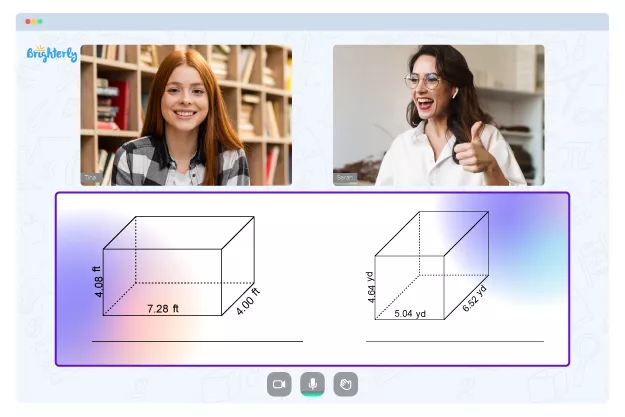Ordered Pair – Definition with Examples
Created on Dec 22, 2023
Updated on January 14, 2024
Welcome to Brighterly, your trusted partner in the journey of learning and understanding mathematics! Today, we’re going to embark on an exciting mathematical adventure through the world of ordered pairs. Picture this: a treasure map, where ‘X’ marks the spot. The ‘X’ is an ordered pair — a crucial clue guiding us to the treasure! From the treasure maps of pirate tales to the complex realms of modern mathematics, ordered pairs are pivotal. Let’s set sail on this voyage of discovery, navigating through the sea of numbers, coordinates, and geometric planes. We’ll unravel the mysteries of ordered pairs, journeying from their definition to their practical applications in coordinate geometry, and finally docking at the island of set theory. With Brighterly by your side, this journey promises to be illuminating and engaging. So, buckle up, math explorers, and let’s set our compass towards the world of ordered pairs!
What is an Ordered Pair?
An ordered pair is a fundamental concept in mathematics, specifically in set theory and geometry. It’s a pair of mathematical objects in which the order of the objects matters. An ordered pair is typically written in the form (a, b), where ‘a’ and ‘b’ could be numbers, variables, or even other mathematical objects.
Consider the ordered pair (3, 5). Here, ‘3’ is the first element, and ‘5’ is the second element. Importantly, the order of these elements matters. This means (3, 5) is not the same as (5, 3) – they are two completely different ordered pairs. The concept of an ordered pair is an essential foundation for many areas of math, including coordinate geometry and relations.
Ordered Pair in Coordinate Geometry
In coordinate geometry, an ordered pair often represents a point on a 2-dimensional plane, also known as the Cartesian plane or x-y plane. The first element of the ordered pair corresponds to the x-coordinate (horizontal position), and the second element corresponds to the y-coordinate (vertical position).
For example, the ordered pair (4, 2) would represent a point located four units to the right and two units up from the origin (the point (0,0)). Understanding the use of ordered pairs in coordinate geometry is essential, as it forms the basis of graphing equations and analyzing geometric shapes and their properties.
Graphing Ordered Pairs
Graphing ordered pairs is a fundamental skill in mathematics. To graph an ordered pair like (6, 3) on a Cartesian plane, you start from the origin. You move 6 units to the right along the x-axis (since the x-coordinate is 6) and then move 3 units up along the y-axis (since the y-coordinate is 3). You then place a point or a dot at the location you’ve arrived at – this represents the ordered pair (6, 3) on the graph.
Graphing ordered pairs is not just a fun activity, but also a practical tool in fields like physics, engineering, and computer graphics. It helps to visualize data, solve equations, and understand patterns and relationships between variables.
Ordered Pairs in Different Quadrants
The Cartesian plane is divided into four quadrants. Each quadrant has a specific combination of positive and negative values for the x and y coordinates. This knowledge helps when dealing with ordered pairs in different quadrants.
For example, in the first quadrant, both the x and y coordinates of an ordered pair are positive. In the second quadrant, the x-coordinate is negative, and the y-coordinate is positive. In the third quadrant, both coordinates are negative, and in the fourth quadrant, the x-coordinate is positive, and the y-coordinate is negative.
Ordered Pair in Sets
In the realm of set theory, an ordered pair is used to define relations and functions. A relation from set A to set B is a set of ordered pairs where the first element is from set A and the second element is from set B. If every element in set A is paired with exactly one element in set B, we have a function.
For example, if we have two sets A = {1, 2, 3} and B = {4, 5, 6}, an example of a relation from A to B could be the set of ordered pairs {(1, 4), (2, 5), (3, 6)}. This relation is also a function since every element in set A is associated with exactly one element in set B.
Equality Property of Ordered Pairs
The equality property of ordered pairs is an essential concept that states that two ordered pairs (a, b) and (c, d) are equal if and only if a equals c and b equals d. In simpler terms, the two ordered pairs are equal when their corresponding elements are equal. This property is fundamental to coordinate geometry and algebra, where the equality of ordered pairs often helps solve equations.
Practice Questions on Ordered Pair
Let’s put our understanding of ordered pairs to the test with some practice questions.
- Plot the ordered pair (3, -2) on a Cartesian plane.
- Are the ordered pairs (5, 7) and (7, 5) equal? Why or why not?
- If we have sets A = {1, 2, 3} and B = {4, 5, 6}, can you create a function from A to B?
Try these questions and review the concepts we’ve discussed to verify your answers!
Conclusion
As we wrap up our mathematical voyage, it’s clear that ordered pairs serve as the compass guiding us through the vast seas of various mathematical disciplines. Their role in coordinate geometry, set theory, and beyond is as crucial as the North Star is to a sailor. Understanding the properties and applications of ordered pairs helps anchor a solid mathematical foundation. It’s akin to learning the language of the universe, where each coordinate, each point, tells a unique story.
At Brighterly, we’ve journeyed together through these mathematical concepts, making the complex simple, the abstract tangible. But remember, every end is a new beginning. Your understanding of ordered pairs is now a launchpad for deeper exploration into the universe of mathematics. Keep practicing, keep questioning, and keep exploring. Soon, you’ll find that grasping ordered pairs and other mathematical concepts is as easy as sailing on a calm sea under a clear sky.
With the support of Brighterly, you’re not just learning math; you’re becoming fluent in the universal language of logical thinking and problem-solving. So, keep your curiosity ignited, your mind open, and remember — the world of mathematics is an ocean of opportunities, and you’re the captain of your learning journey. Sail on, brave explorer!
Frequently Asked Questions On Ordered Pair
What is an ordered pair?
An ordered pair is a fundamental concept in mathematics that consists of two elements where the arrangement is important. It is denoted as (a, b), where ‘a’ is the first element and ‘b’ is the second. Ordered pairs are used extensively in various areas of mathematics, such as coordinate geometry where they denote a point in the Cartesian plane, and in set theory where they define relations and functions. The unique characteristic of an ordered pair is that switching the elements creates a different pair – meaning (a, b) is not the same as (b, a) unless a = b.
How do we graph an ordered pair?
Graphing an ordered pair involves placing a point on a two-dimensional grid, also known as the Cartesian plane. This plane has two axes: the horizontal x-axis and the vertical y-axis. The first number in the ordered pair (a, b) corresponds to the x-coordinate and tells you how far to move horizontally from the origin (0,0) – to the right for positive numbers and to the left for negative numbers. The second number corresponds to the y-coordinate and instructs how far to move vertically from the origin – up for positive numbers and down for negative numbers. Once these movements are made, a point is placed to represent the ordered pair on the graph.
What is the significance of the order in an ordered pair?
The order of elements in an ordered pair is extremely significant because it determines the identity of the pair. If the order of elements is changed, it results in a completely different pair. For instance, the ordered pair (3, 5) is not the same as (5, 3). This is because the first element in the pair corresponds to the x-coordinate (horizontal position on a graph) and the second element corresponds to the y-coordinate (vertical position on a graph). Therefore, switching the order of elements changes the location of the point represented by the pair on the Cartesian plane. In the context of set theory, changing the order of elements would alter the relation or function that the pair represents.




